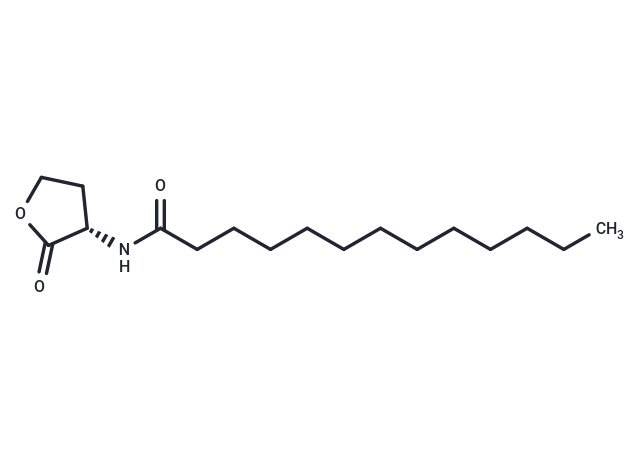 Your shopping cart is currently empty
Your shopping cart is currently empty

Quorum sensing is a regulatory system used by bacteria for controlling gene expression in response to increasing cell density. This regulatory process manifests itself with a variety of phenotypes including biofilm formation and virulence factor production. Coordinated gene expression is achieved by the production, release, and detection of small diffusible signal molecules called autoinducers. The N-acylated homoserine lactones (AHLs) comprise one such class of autoinducers, each of which generally consists of a fatty acid coupled with homoserine lactone (HSL). Regulation of bacterial quorum sensing signaling systems to inhibit pathogenesis represents a new approach to antimicrobial therapy in the treatment of infectious diseases. AHLs vary in acyl group length (C4-C18), in the substitution of C3 (hydrogen, hydroxyl, or oxo group), and in the presence or absence of one or more carbon-carbon double bonds in the fatty acid chain. These differences confer signal specificity through the affinity of transcriptional regulators of the LuxR family. N-tridecanoyl-L-Homoserine lactone (C13-HSL) possesses a rare odd-numbered acyl carbon chain and is produced by wild-type and mutant strains of Y. pseudotuberculosis in trace amounts.

| Pack Size | Price | USA Warehouse | Global Warehouse | Quantity |
|---|---|---|---|---|
| 5 mg | $159 | 35 days | 35 days | |
| 10 mg | $297 | 35 days | 35 days | |
| 25 mg | $686 | 35 days | 35 days | |
| 50 mg | $1,130 | 35 days | 35 days |
| Description | Quorum sensing is a regulatory system used by bacteria for controlling gene expression in response to increasing cell density. This regulatory process manifests itself with a variety of phenotypes including biofilm formation and virulence factor production. Coordinated gene expression is achieved by the production, release, and detection of small diffusible signal molecules called autoinducers. The N-acylated homoserine lactones (AHLs) comprise one such class of autoinducers, each of which generally consists of a fatty acid coupled with homoserine lactone (HSL). Regulation of bacterial quorum sensing signaling systems to inhibit pathogenesis represents a new approach to antimicrobial therapy in the treatment of infectious diseases. AHLs vary in acyl group length (C4-C18), in the substitution of C3 (hydrogen, hydroxyl, or oxo group), and in the presence or absence of one or more carbon-carbon double bonds in the fatty acid chain. These differences confer signal specificity through the affinity of transcriptional regulators of the LuxR family. N-tridecanoyl-L-Homoserine lactone (C13-HSL) possesses a rare odd-numbered acyl carbon chain and is produced by wild-type and mutant strains of Y. pseudotuberculosis in trace amounts. |
| Molecular Weight | 297.43 |
| Formula | C17H31NO3 |
| Cas No. | 878627-21-5 |
| Storage | Powder: -20°C for 3 years | In solvent: -80°C for 1 year |
| Solubility Information | DMF: 0.25 mg/mL (0.84 mM), Sonication is recommended. |
| Size | Quantity | Unit Price | Amount | Operation |
|---|

Copyright © 2015-2025 TargetMol Chemicals Inc. All Rights Reserved.